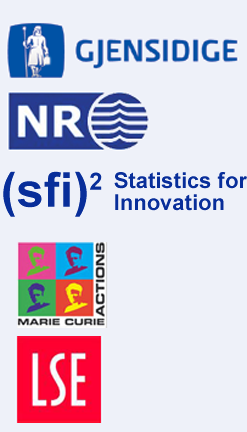|
|
|
 |
 |
 |
|
Session 1: Estimating climate risk in a world of insecurity
Climate change will be felt both by gradual and sudden changes, as well as by changes in the intensity and frequency of extreme events. Global and regional climate models projecting the spatial distribution of these changes give a coarse idea of the expected changes. Nevertheless, the uncertainties in these projections need to be incorporated in statistical models for estimating the risk, as well as in the calculation of insurance premiums. What do we know so far, where are the challenges?
Session 2: Insurers adaption - the precautionary principle
A precautionary approach implies that actions are undertaken which try to minimize harm even when the absence of scientific certainty makes it difficult to predict the likelihood of harm occurring, or the level of harm should it occur. What philosophical views imply that the lack of full scientific certainty should not be used to postpone cost-effective damage prevention? What are the practical approaches when it comes to damage prevention with various stakeholders involved? A case-study on river management discusses the effect of preventive actions. Another study reviews the climate robustness of buildings from a Scandinavian perspective.
Session 3: Responsibility: Society or the individual?
The responsibility for climate adaptation has to be assigned to various actors in society - individuals, the public and private sector. How can the burden be distributed fairly and economically reasonable? What incentives can be provided through political action? How may the thresholds for damage claims change and be distributed if the intensity and frequency of extreme weather events increases? Experiences from vulnerability studies of the Swedish society, as well as a case-study on storm behaviour and public/private response in Northern/Central Europe shows practical perspectives on these issues.
Session 4: Mapping risk
It has been suggested that geographic information systems can support traditional statistical analyses to localize and give insight into areas that are vulnerable to climatic hazards. What kind of spatial patterns and unique regional conditions can be unveiled and thus, will allow for precautionary action and adaptation strategies? A case-study from flood risk management in the Netherlands shows how risk maps can be used for policy development.
Session 5: Collaboration between the business and the public
Risk management of climate change can be only achieved by concerted action of various stakeholders in the private and public sector. How can private-public interactions organise a financial robust insurance system for unequally distributed climate risk? In addition, an example from the UK on the complex collaborative process in spatial planning for climate change is discussed. Another case-study on mud- and snow slide hazards in the Alps presents the increase in vulnerability of the local population as a result of both environmental and social factors.
Session 6: Communicating climate risk
Climate measurements do not necessarily represent the way people actually perceive climate conditions in their daily life. People may respond to various climate stimuli in different way, and adaptation to changes may be influenced by other rationales rather than seeking climate adaptability and robustness. As such, it can be a challenge communicating the necessity to reduce global warming as well as to prepare society for potential adverse climate conditions. What have we learned about using media campaigns for getting public attention? How can scientists help making people understand uncertainty about regional consequences of climate change derived from global climate models?
Session 7: Reinsuring climate risk and emerging business
Traditionally, insurance companies will reinsure their own risk in the international market. What are the thoughts of the reinsurance industry on a forthcoming increase in climate damage related payouts and what management strategies are applied to encourage primary insurers to reduce the risk? How may the content of the coverage change in a changing world and what expertise and knowledge can reinsures provide? A case-study on the change in the global risk landscape will discuss these issues in further details. Climate changes will give room for new business solutions. This session includes a presentation of emerging markets and customer groups as well as new hazards which need special attention in the decades to come.
|
|
|
|



